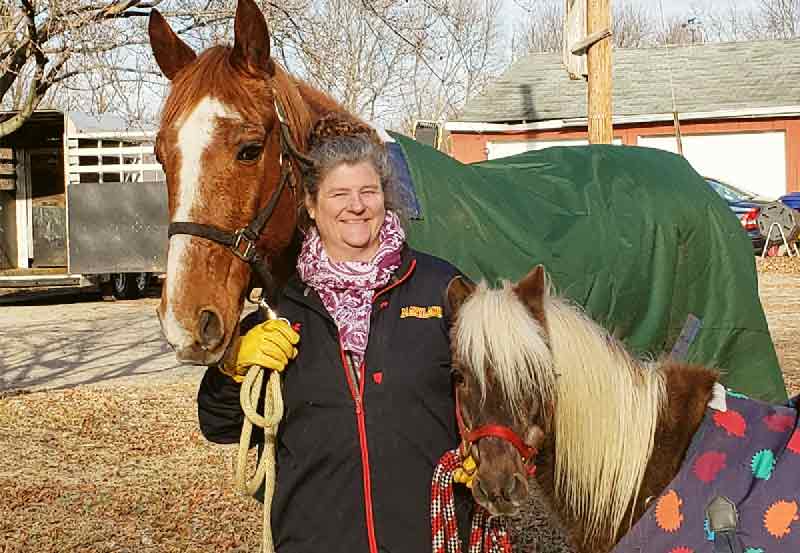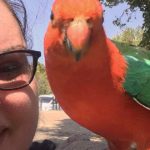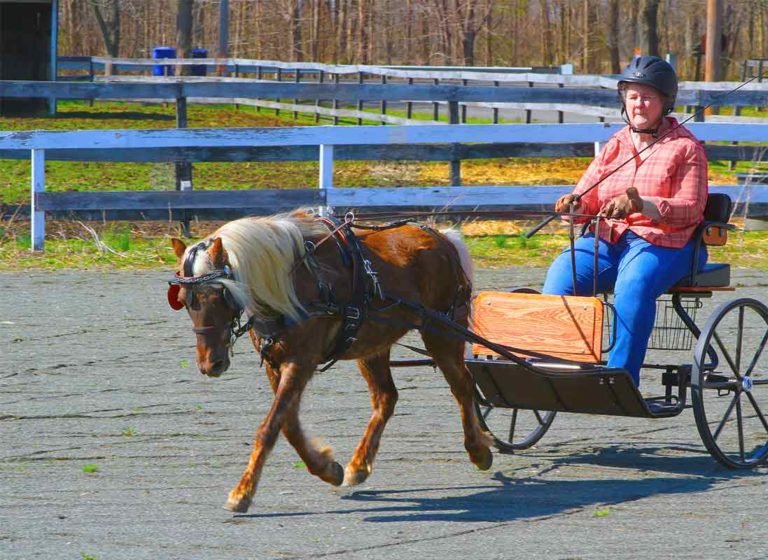I was diagnosed with polymyositis in November of 2011, at age 43, after a year-long battle with fatigue and muscle pain resulting in frequent falls and increasing weakness. I was a wife, mother, nurse, avid equestrian, and volunteered in my community as an EMT/firefighter. I had a son headed to college the following year and another son only ten years old. They needed me.
My husband John and I were alarmed to learn that not only was the weakness likely permanent, but it would also eventually worsen and could spread to the muscles needed to eat and breathe, and cardiac muscle as well. We would shortly learn that polymyositis was not even the name of the rare disease I have. I tested positive for the Anti-SRP antibody which means I have immune-mediated necrotizing myopathy; still a rare disease, and according to my newly acquired, very empathetic rheumatologist would present additional challenges as it is “resistant to treatment.”
Treatment. A misnomer in that the disease process itself was incurable but able to be slowed or delayed. For me, treatment, in the beginning, was an enormous daily dose of steroids (80 milligrams daily) and azathioprine which left me bloated, weak, nauseous and balding. I was terrified I would lose the ability to walk, as that was the predicted outcome. Our incessant research led us to what we would forever refer to as “the slide”, a 2015 graph beholding the grim prognosis that anti-SRP affected persons had a 25% survival rate at 5 years post-diagnosis. But more devastating to me was no longer being able to ride my horse. As kind and gentle as my Red was, the lack of strength in my legs made it very difficult to sit astride, and impossible to mount and dismount independently.
I was determined to gain strength back and pursued physical therapy aggressively. When insurance refused to pay for continued visits each year, John (a carpenter by trade) created my own physical therapy “playground” in our basement. I wanted it located there intentionally because I was convinced that to stop going up and downstairs (as difficult as it was) would cost muscle memory and hasten immobility. In the fire academy, we learned the safest way to go down steps with bulky equipment was actually backward, on your hands and knees. If you did slip or fall, you could interrupt it by flattening your body on the steps and avoid tumbling down the whole flight. I employed this method safely and was able to keep using those muscles. The kids thought it was hilarious, but it worked for me! They teased goodnaturedly, but they readily pitched in with extra chores, taking care of things I could no longer do. The kids reached things I couldn’t, helped me out of chairs and onto curbs, and off the ground when it was necessary.
But more devastating to me was no longer being able to ride my horse. As kind and gentle as my Red was, the lack of strength in my legs made it very difficult to sit astride, and impossible to mount and dismount independently.
I held my own and continued to work, parent and enjoy our tiny farmette for the next two years. Caring for my animals has always been, and continues to be, my first choice of physical therapy. I had been fortunate to have been mentored by some of the finest horsemen I still know today, and they instilled in me the foundation that your horses come first. John and I came up with ideas to make caring for them safer and easier for me. I never wanted to rehome them, so I fought for them when I couldn’t do it for myself.
Suddenly that second summer, without warning, I was falling again and now starting to choke on my food and drinks. I became once again so weak that John was even helping me turn over in bed and with showering, and the falls started recurring. My rheumatologist promptly referred me to the Myositis Center at Johns Hopkins University. We were both relieved and fearful, grateful to have a high level of health care less than three hours from home and near my oldest son (now attending the University of Maryland). We were terrified that time was running out.
Dr. Grant Louie at the Johns Hopkins Myositis Center offered a new therapy, mycophenolate with a continued small dose of steroids. Like a miracle, within a month of starting the new treatment, my response was excellent. I continue to get excellent care at JHU’s Myositis Center today, and I still go down the stairs backward.
I was continuing to work full time as a nurse, but it would become more and more difficult over the next few years. My supervisor followed company policy to the letter regarding medical leaves, which was helpful, but I soon felt the need to change to the night shift, where the halls were less crowded and the pace less frantic. The physical fatigue from the night shift is easier for me to tolerate than the emotional distress of feeling that I was constantly falling behind on my work during the day. The added bonus has been that without a steady flow of interruptions, I had more time to be at the bedside of my patients. I have gained a profound new respect for those with mobility issues, and I can be an advocate for them.
We started attending every Myositis Association Annual Patient Conference we could, and each time I met persons affected by a form of myositis, I became more grateful to have been blessed with a rapid diagnosis. The sessions were informative and extended to caregivers/spouses and it was amazing to be with a group of people who could truly understand our struggles and give us encouragement.
They were all fabulous conferences, but there came a turning point in September of 2016, at the TMA Patient Conference in New Orleans. We had an amazing time and also visited an old friend living in Louisiana with whom I used to ride. The physical therapy information session that year was led by Dr. Sue Maillard, who is also a horse lover. I had attempted therapeutic riding during the earlier stages of my illness and while I loved my saddle time I was frustrated by the lack of independence I felt not being able to ride unassisted or alone. Suddenly I looked at my husband in the New Orleans hotel room and said, “Maybe I could learn to drive a smaller horse with a cart.” John was surprised and thrilled. An avid rider himself, he had driven years ago and has remained a big fan.
Now the search was on! Within only a month, we had settled on a lovely Hackney pony named Magic. He was the perfect match for John’s advanced skills, but my clumsiness and beginning driving skills were not a suitable match for his energy level. I was frustrated by not feeling “connected” to my horse. Sitting behind a horse in a cart I had to be loaded into, and communicating only with my reins and voice, not my seat and legs, was something I was having difficulty embracing. I felt isolated from the driving process, and this disease process was already making me feel isolated enough. Poor Magic was lost too. My tics and tremors didn’t give him any confidence in me either. I lost confidence in my driving ability and adjusted to the role of his groom and John’s helper which satisfied my competitive wishes but still left me feeling slightly empty. I continued to care for Red, who by now was over thirty years old and retired anyway.
Suddenly I looked at my husband in the New Orleans hotel room and said, “Maybe I could learn to drive a smaller horse with a cart John was surprised and thrilled.”
Life rolled on. We traveled while we knew we could and continued to enjoy our tiny farm. I added chickens to my menagerie, absolutely convinced that caring for my animals was good mental and physical therapy for me.
In August of 2018, my sister Carole died suddenly, leaving me devastated. She had been a huge cheerleader for me during my illness, and I was so lost without her. My world screeched to a halt. I knew she would not want me to give up, but I was overwhelmed with grief. Although not a horse enthusiast herself, she had always encouraged my passion. The day Magic arrived on the farm she presented me with a wand and a tiara stating that if I was going to be a princess, I might as well look the part! John kept my spirits up as best he could, but I know he worried as he saw a decline in my fight to keep my mobility.
Three weeks after Carole died, in the middle of a sunny afternoon, I got a random text from a friend with a photo of a flyer advertising a pony for sale. He was a small Shetland pony hitched to a cart in the photo. “Very gentle pony, used for children’s events”. I did not recognize the area code in the phone number and asked her where she was. She was ten hours from home in New Jersey, having stopped in South Carolina on her travel home.
I tried to ignore that text for hours. Finally, I dialed the number, inquired about a few details and bought the pony, sight unseen but for the photo. I was almost afraid to tell John but I couldn’t manage the twenty-plus hour round trip by myself with the trailer. He readily agreed to come, and I’m sure he considered having me committed, especially when he found out my new pony was twenty years old!
We brought Jazz home in September of 2018. From the start, he was bold but kind, the perfect combination of pep and brakes, I like to say. He was kind and patient, tolerating my slow pace and clumsiness and often choosing to follow me around the barn and pastures as I did my chores, never minding when I touched his back or neck to steady myself. When I sat in the cart, he would often turn his head as if to check on me, and his ears moved like constant antennae to listen for my voice.

As my confidence grew, so did his. Jazz became more bold, satisfying my need for the feeling of freedom. I wasn’t isolated anymore! Amazingly, the feeling of being less isolated seeped into my life outside of the horses as well. We did struggle to find an accessible cart to accommodate my difficulty climbing in and safely maintaining my leg position, but that was also light enough to accommodate Jazz’s small stature.
We found a carriage builder in Pennsylvania, Johnny Stoltzfus of Bird-in-Hand Carriages who after hearing my story, quickly agreed to customize one of his designs with a lower entry, wider wheelbase, and additional foot rails. He tackled the project with contagious enthusiasm and I got to visit several times during the building process. He added the additional special touch of a feather design embroidered into the seatback in memory of my sister. For years, while she was alive, it was our shared symbol of good luck.
As my confidence grew, so did his. Jazz became more bold, satisfying my need for the feeling of freedom. I wasn’t isolated anymore!
We also found an instructor, Lynn Stokking of Lighted Way Equestrian Program, an hour from our home who had extensive knowledge of body mechanics and how to use the muscles and mobility I have left to communicate best with Jazz. She also has a true gift of communicating with horses. Under her kind, patient guidance, we flourished!
My confidence grew every time I drove Jazz with our new accessible cart. And, we recently received our “100 Hours of Driving” award from the American Driving Society.
Jazz is small enough for me to care for, harness and hitch independently, which gives me great satisfaction. We have competed at many shows and driving events together and despite his age, he looks much younger and enjoys every moment. He is a true ambassador wherever we go.
My next journey (I hope) is to obtain a mental health certification as an Equine Facilitator through PATH International (Professional Association of Therapeutic Horsemanship). I want others to benefit from the gentle kindness and emotional support Jazz affords me, and I can do this by obtaining his certification as a therapy animal. I might not have the physical strength needed to work with therapeutic riders but there is a great need for equine-assisted therapy to help people with dementia, anxiety, depression, Asperger’s, and PTSD.
I hope my story inspires other myositis warriors to find new challenges, related or unrelated to past passions. Finding something to fight for made such a difference for me.




0 Comments